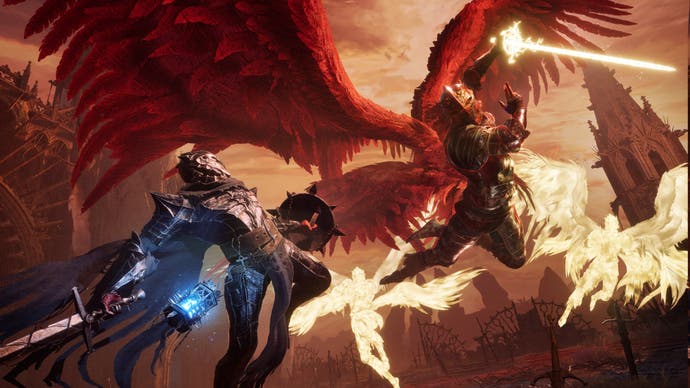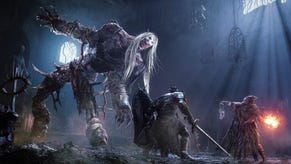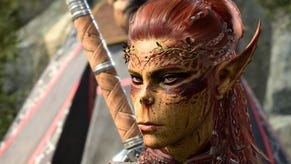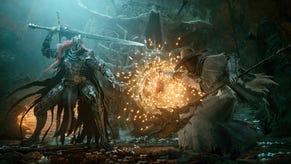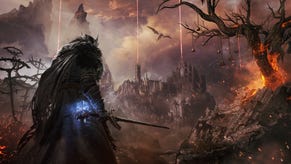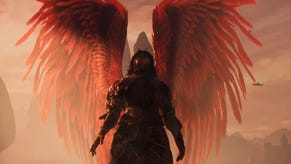Lords of the Fallen (2023) review - a Dark Souls tribute lacking its own identity
Hollow knight.
She's a fierce warrior, but she's crying tears of blood. After a tense battle of graceful sweeping sword arcs - and me frantically dodging - she sprouts a set of scarlet wings, flies upwards, and proceeds to rain down hell.
This is Pieta, the first proper boss in Lords of the Fallen after the tutorial. Or, as I like to call her, Budget Malenia. It's abundantly clear where developer Hexworks has taken inspiration, leaning into the most popular aspects of FromSoftware's Souls games - here Elden Ring's most celebrated encounter. Pieta is emblematic of the game as a whole: Lords of the Fallen looks like Souls, it plays like Souls, but it's an inferior imitation that's rough around the edges.
If the name seems familiar, you may remember the 2014 Lords of the Fallen from developer Deck13 and publisher CI Games that also attempted to replicate the Souls experience. I went back to that for the purpose of this review and it certainly hasn't aged well with its lumbering combat and generic visuals. This new Lords of the Fallen is a complete reimagining from Hexworks (once more published by CI Games), with improved combat and a fresh story.
It's clear Hexworks understands the essence of why Souls games are popular. It's not just about high difficulty or winged female bosses; it's about precise combat, looping world design, and a twisted nightmare of monsters to conquer. Yet Lords of the Fallen also leans into the worst elements of the genre, with an oppressively dark atmosphere, poor platforming, and cheap decisions to heighten difficulty.
It doesn't make a great first impression. The plot is minimalist rather than enigmatic, to the point of being underdeveloped - a thin excuse to begin the adventure. You choose a starting class from a typical selection (magic use is seen as an advanced skill here, owing to its constant use of ranged stance and limited mana, but there are light and dark variations) and then there's an insubstantial character creator that leaves everyone ugly as sin. There are some nice beard options though.
From there, Lords of the Fallen is comfortingly familiar, with almost identical controls and UI to Dark Souls. You swing light and heavy attacks and parry, managing stamina; you heal from a limited supply; you level up attributes for weapon bonuses and spend Remembrance from bosses on unique weapons; you explore from bonfire to bonf-, sorry, vestige to vestige. Die and you lose your vigor, ready to collect again. One extra twist is wither damage: block attacks and you'll take temporary damage you can regain by retaliating, but get hit again and your health is lost. It inspires aggressive rather than conservative play, Hexworks sprinkling a little Bloodborne flavour.
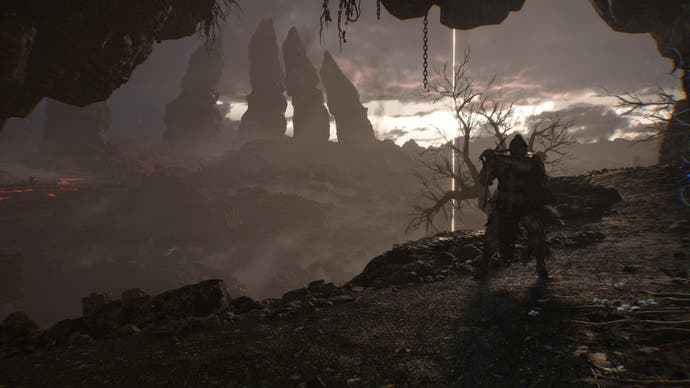

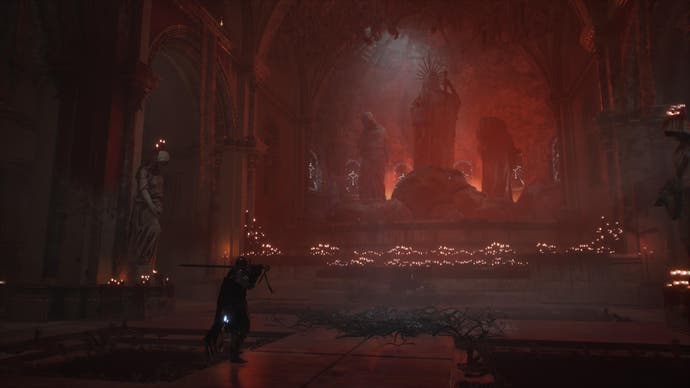
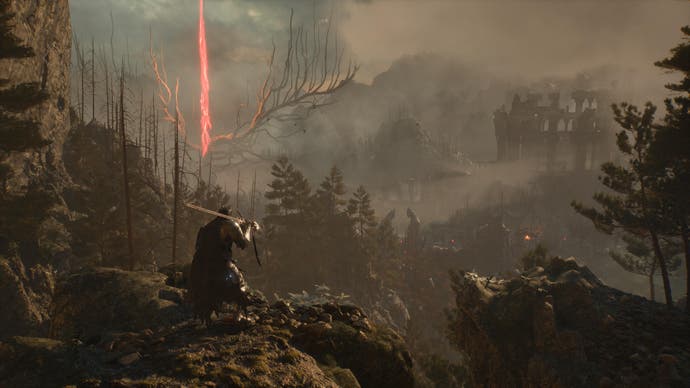
You'll explore environments that tick off the full spectrum of Souls clichés: ramshackle villages of shambling, zombified enemies; ghostly ruins buried in thick snow; decrepit castles populated by furious knights; bloody torture chambers. I spent hours lost in a poison swamp - a FromSoft necessity. Level designs are intricate, smartly looping, and full of hidden passages, though progression through the world is linear. Collectible maps are more artistic hints of where to go, vaguely making up for a sometimes confusing lack of direction and ephemeral questlines that rarely intrigue.
Between its exploration and satisfying rhythm of responsive combat, Lords of the Fallen feels like a veritable Souls game. Yet it's so obsessed with the "dark" of its inspiration and desire to suggest pervading dread, it feels relentlessly miserable to play through. It even repeats the same trick as Dark Souls: after hours in a nightmarish flaming town, a gloomy mine, and an underground cistern, you rise in a caged lift to the light of the surface - except it's just as grey and overcast as the rest of the game. Never mind praise the sun, where's the sun?
As for the expected high difficulty, I wrote "not that bad" in my notes before immediately hitting a brick wall with the next boss. Until then, I'd dispatched most bosses first or second try, their mostly humanoid designs and obvious telegraphing making attacks easy to avoid or counter. Hexworks has since patched the game to make certain bosses more aggressive. Still, Lords of the Fallen then employs the annoying trick of turning bosses into regular enemies straight afterwards - not only a cheap tactic to heighten difficulty, it disappointingly strips bosses of their identity and sense of occasion. Throw in sniping and hidden enemies, predictable traps, and late-game areas that swarm the player, and it's a lesson in frustration more than challenge. The main cause of death? The finicky, unreliable lock-on.
Difficulty is intensified by the checkpoint system. Vestiges can be warped to and from, replenish health, and allow for level ups, but they're sparse. In addition, you can create a temporary checkpoint at set places throughout each area - a seemingly smart idea to allow players to pause where they feel it's necessary. But it's flawed: a specific item is required to activate these checkpoints that's in short supply, plus they can be warped from but not to. It means you're often either left stranded with no way to activate a checkpoint, or you warp out of an area but can't return to where you were - both options leading to laborious repetition of an area from the start that hinders exploration.
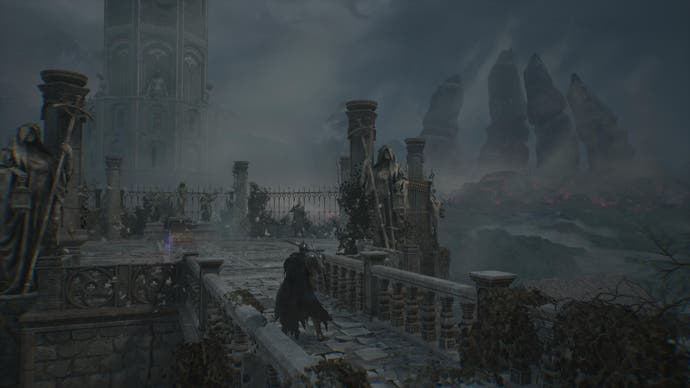
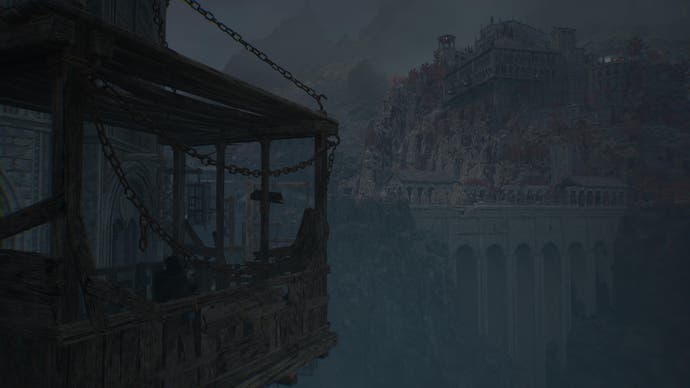
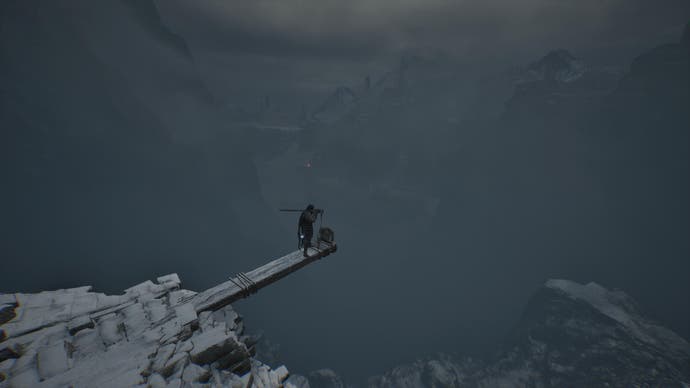
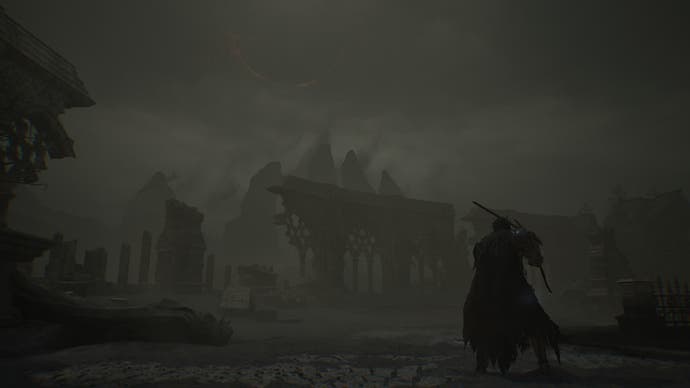
Lords of the Fallen isn't without its own ideas, primarily the Umbral lamp. This is used to travel from Axiom (the world of the living) to Umbral (the world of the dead) and comes with a number of abilities. You can peer into Umbral to discover secrets; you can rip the souls out of enemies for wither damage; and you can destroy souls controlling some invulnerable enemies. The game's tutorial just doesn't do a great job of explaining these necessary abilities and its use is slow and cumbersome.
More exciting is fully transporting to Umbral, either manually with the lamp or through death, effectively acting as an extra life. It feels a bit like Frodo wearing the ring, the world shifting to a nightmare vision of perpetual fog, bio-horror growths, and wispy, respawning enemies useful for grinding. Suddenly previously hidden skeletal walkways and platforms appear - ripe for environmental puzzles, but criminally underused. You can travel to Umbral at will but can only evacuate at specific totems, something Hexworks employs to ramp up the tension. Over time more powerful enemies creep out, eventually leading to pursuit from a scythe-wielding (yet killable) shadowy figure. It's wonderfully panic-inducing.
At its core, then, Lords of the Fallen is a perfectly acceptable Soulslike that's often fun to play and offers the same satisfaction at overcoming adversity. I enjoyed getting lost, defeating bosses, and discovering what grisly creature I'd encounter next. For experienced Soulslike players, it scratches an itch. But that's testament to FromSoft's ingenuity more than Hexworks copying its homework. Its own ideas aren't enough for Lords of the Fallen to emerge from the shadow of FromSoft. Instead, it's an authentic facsimile of the Dark Souls experience that's unrefined and lacks identity; a mass of clichés that made me keenly aware I was playing a copy. It lacks the twisted elegance, the creepily imaginative designs, the careful balance, and sweeping grandeur of the original Souls games.
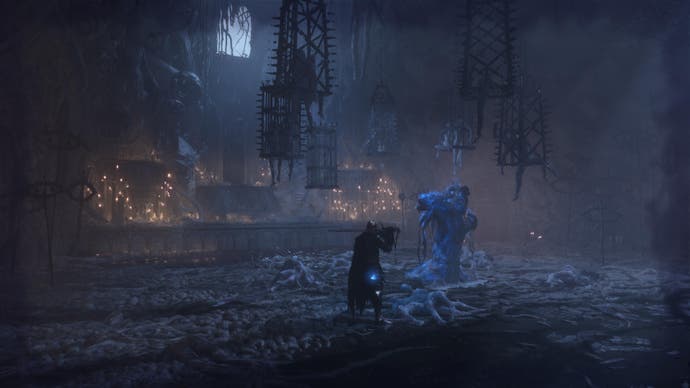
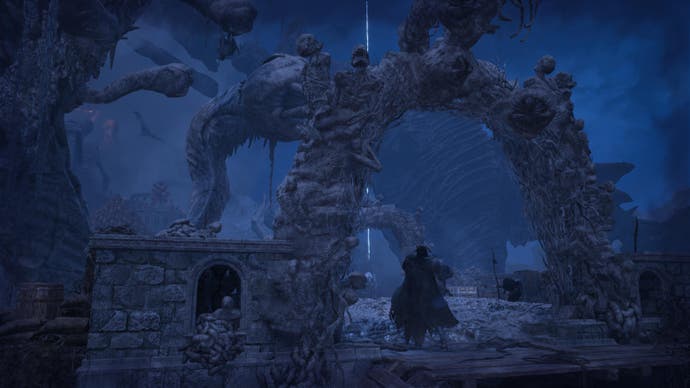
What's worse is the game's performance. The developer has frequently updated the game during the review period to make significant improvements, and promises to continue up until public release, but I can't recommend Lords of the Fallen from what I've played. On PS5, the framerate frequently stutters, textures pop in, visual effects like weather are awkwardly blurry, enemy AI is wonkily unpredictable between runs, and there's a horrible film grain on by default to cover the cracks. Initially a bug meant I had to play without sound at all, though this was fixed. Later, a castle area had a frame rate so bad it was practically unplayable - I ignored enemies and ran through it as best I could to just reach the end. This has also since been fixed, by crudely locking a door to block off half the area. I'll leave the full analysis to Digital Foundry, but dying to bosses because stuttering caused mis-timed dodges is not the challenge I want or expect from a Soulslike game. It's a shame, because there are some occasionally beautiful vistas and gruesome designs all powered by Unreal Engine 5, but between the poor performance and unrelentingly dismal greys and browns, Lords of the Fallen is hardly a next-gen Soulslike.
I left the game reflecting on the state of the genre. As close as this might be to a new Dark Souls, FromSoft has continuously iterated on its own formula and - with the open world of Elden Ring in particular - shifted the goalposts. As the likes of Lords of the Fallen and (the superior) Lies of P prove, developers are getting closer to replicating the thrill of the Souls games, but nobody does it like FromSoft can. Why settle for a copy when you can experience the real thing?
A copy of Lords of the Fallen was provided for review by CI Games.
